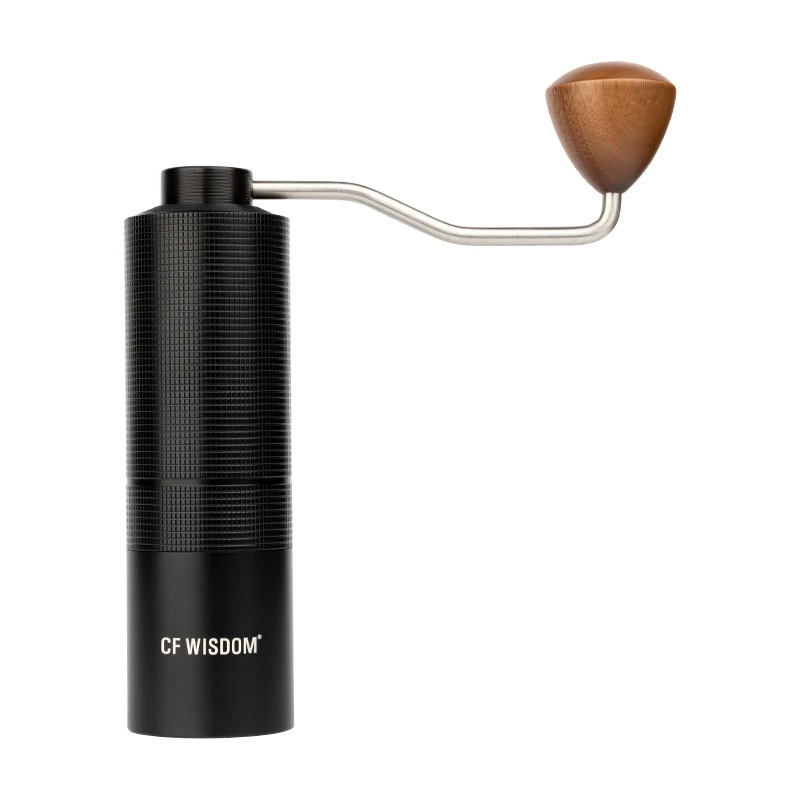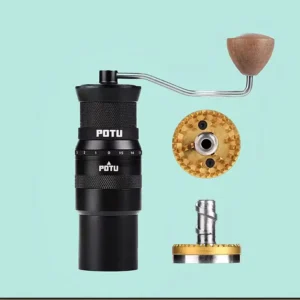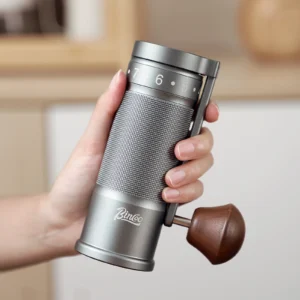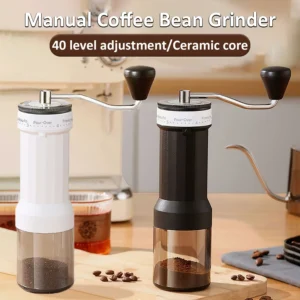Introduction: Understanding Coffee Grinder Fundamentals
The aroma of freshly ground coffee beans wafting through your kitchen is one of life’s simple pleasures. But did you know that coffee begins losing its essential aromatic compounds within minutes of grinding? This is why the type of grinder you choose plays such a crucial role in your coffee experience.
For home brewers, the choice typically comes down to two main options: burr grinders and blade grinders. This decision isn’t merely about equipment—it’s about the fundamental chemistry of how flavor is extracted from your beans. The consistency and size of your coffee grounds directly impact extraction, which ultimately determines whether your morning cup is bitter, sour, balanced, or flat.
Throughout this guide, we’ll explore the mechanics behind these two grinding methods, their strengths and limitations, and how they affect your brewing results. We’ll help you understand which option makes the most sense for different brewing styles, budgets, and coffee preferences.
Making the right choice between these two grinding approaches requires comparing burr and blade grinders from multiple angles—from technical operation to practical everyday use. Let’s begin by understanding exactly how these different grinders work.
How Coffee Grinders Work: The Technical Differences
Blade Grinders: The Chopping Method
Blade grinders operate on a simple principle: a spinning blade, similar to a blender, chops coffee beans into smaller pieces. These blades typically spin at extremely high speeds, often exceeding 20,000 RPM. As beans bounce around the grinding chamber, they’re repeatedly struck by the blades until they’re broken down into smaller fragments.
The result is a mixture of differently sized coffee particles—from fine powder to larger chunks. This inconsistency occurs because some beans encounter the blades more frequently than others. Additionally, blade grinders offer minimal control over the final grind size beyond timing how long you run the grinder.
Burr Grinders: The Precision Crushing Method
In contrast, burr grinders use two abrasive surfaces (burrs) that rotate against each other at a much slower speed—typically between 400-1000 RPM. As coffee beans fall between these surfaces, they’re crushed to a consistent size determined by the distance between the burrs.
The key advantage is precision and control. By adjusting the gap between burrs, you can dial in specific grind sizes for different brewing methods. Burr grinders come in two main varieties: conical (where a cone-shaped burr fits inside a ring) and flat (where two parallel rings grind against each other). For home users, either design can produce excellent results, though conical burrs tend to be more common in consumer-grade equipment.
The fundamental difference in how these machines operate explains why the burr grinder vs blade grinder debate centers around consistency—burrs crush beans to a uniform size, while blades create a mixture of particles.
The Science of Extraction: Why Grind Consistency Matters
Coffee extraction is essentially a chemical process where hot water dissolves soluble compounds from ground coffee. These compounds extract in a sequence: acids first, followed by sugars, and finally bitter compounds. The size of coffee particles directly determines how quickly this extraction occurs.
When your grounds are inconsistent sizes, as with blade grinders, smaller particles over-extract (becoming bitter) while larger chunks under-extract (remaining sour or weak). This simultaneous under and over-extraction creates conflicting flavor notes that muddy your cup’s profile.
Think of it like cooking: if you tried to roast vegetables cut in wildly different sizes, some would burn while others remained raw. The same principle applies to coffee extraction—consistency is key to even cooking, or in this case, even extraction.
The more consistent your grounds, the more balanced your extraction becomes, allowing you to access coffee’s full flavor potential—the bright acidity, rich sweetness, and complex aromatics without excessive bitterness. This is why understanding the pivotal role coffee grinder flavor plays in brewing is essential for coffee enthusiasts seeking to improve their home brewing results.
Blade Grinders: Advantages and Limitations for Home Use
Advantages of Blade Grinders:
- Affordability: Most blade grinders are priced between $15-50, making them accessible entry points for casual coffee drinkers
- Compact footprint: Their small size makes them ideal for tight kitchen spaces or occasional use
- Simplicity: Operation couldn’t be easier—just add beans and press a button until grounds reach desired fineness
- Multi-purpose utility: Many blade grinders can also handle spices, herbs, and other dry ingredients, adding versatility to your kitchen
Limitations of Blade Grinders:
- Inconsistent grind size: The fundamental limitation is the inability to produce uniform particle sizes, leading to uneven extraction
- Heat generation: The high-speed blades create friction, generating heat that can alter delicate flavor compounds in coffee beans
- Limited control: Achieving specific grind sizes for different brewing methods involves guesswork and inconsistent results
- Static buildup: The high-speed operation creates static electricity, causing grounds to cling to surfaces and creating mess
- Noise and durability concerns: Blade grinders tend to be quite loud during operation, and their motors often have shorter lifespans with regular use
Popular budget models like the Krups F203 or Hamilton Beach Fresh Grind demonstrate that blade grinders can serve casual coffee drinkers who prioritize convenience and cost over precision. However, their limitations become apparent as brewing knowledge grows and palates develop.
Understanding how different grinding methods affect coffee temperature is important, as manual and electric coffee grinders produce heat differently, with potential impacts on flavor compounds.
Burr Grinders: Performance Benefits for Home Brewers
Advantages of Burr Grinders:
- Superior grind consistency: The crushing mechanism produces uniformly sized particles, enabling even extraction and balanced flavor
- Precise control: Adjustable settings allow you to target specific grind sizes from extra-fine espresso to coarse French press
- Temperature management: Lower operating speeds generate less heat during grinding, preserving volatile flavor compounds
- Repeatable results: Once you find your preferred setting, you can achieve the same grind profile batch after batch
- Longevity: Quality burr grinders typically last years or even decades with proper maintenance, making them long-term investments
Limitations of Burr Grinders:
- Higher initial cost: Entry-level electric burr grinders typically start around $100, with premium models reaching $300+
- Larger footprint: They require more counter or storage space compared to compact blade models
- More complex cleaning: Multiple components need regular cleaning to prevent oil buildup and maintain performance
- Slower grinding speed: The precision comes at the cost of speed—grinding the same quantity takes longer than with blade grinders
Studies consistently show that uniform particle size improves extraction efficiency by 20-30%, resulting in notably improved flavor clarity and balance. This improvement becomes especially apparent in brewing methods that are particularly sensitive to grind consistency, such as espresso and pour-over.
For those wondering about real-world impact, exploring whether a burr grinder makes a difference in cup quality reveals substantial improvements in flavor clarity, consistency, and the ability to fine-tune results.
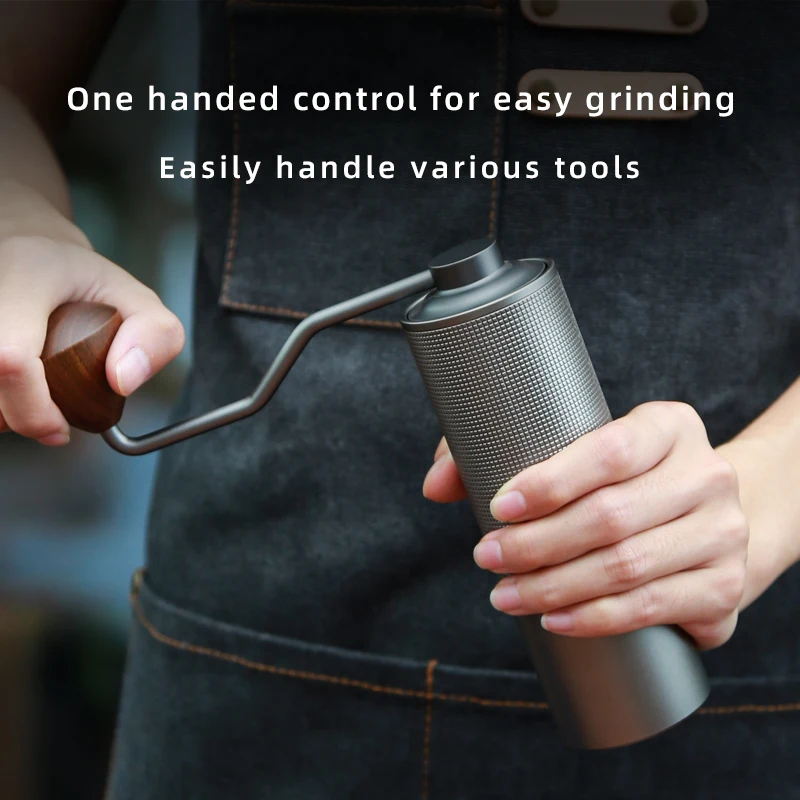
Manual vs. Electric Burr Grinders: Expanding Your Options
The burr grinder category offers another important choice: manual or electric operation. Manual burr grinders use hand power via a crank mechanism to turn the burrs, while electric models use motors.
Manual burr grinders typically range from $40-80 for quality options, making them more affordable than electric alternatives ($100-300+). They excel in portability, allowing you to grind fresh coffee while traveling or camping. They’re also virtually silent compared to their electric counterparts, making them apartment-friendly for early morning brewing.
The tradeoff is effort—grinding enough coffee for a full pot can take several minutes of continuous cranking. Manual grinders also typically have smaller capacities, making them better suited for brewing single cups or small batches.
Electric burr grinders offer convenience and capacity. With the push of a button, they can process larger quantities of beans quickly. This makes them ideal for households that brew multiple cups throughout the day or entertain coffee-drinking guests frequently.
For those with limited budgets but a desire for better quality, comparing manual burr vs electric blade grinders often reveals that an affordable manual burr grinder can provide better grinding results than a similarly-priced electric blade model.
Practical Comparison: Matching Grinder Types to Brewing Methods
| Brewing Method | Ideal Grind Size | Blade Grinder Performance | Burr Grinder Performance |
|---|---|---|---|
| Espresso | Fine (0.2-0.3mm) | Poor – Inconsistent particle size prevents proper extraction and puck formation | Excellent – Capable of consistent fine grinding needed for proper espresso extraction |
| Pour Over/Filter | Medium (0.6-0.8mm) | Fair – Can achieve medium grinds but with significant inconsistency | Very Good – Consistent medium grind enables even extraction and clean cup |
| French Press | Coarse (1.0-1.2mm) | Fair to Good – Can achieve coarser grind but still produces unwanted fines | Very Good – Minimal fines in coarse grinds prevent muddy texture |
| AeroPress | Variable (0.4-0.8mm) | Fair – Adaptable but inconsistent | Excellent – Can dial in precise grind sizes for different recipes |
Espresso is particularly sensitive to grind consistency because it uses high pressure to force water through a compressed puck of coffee in seconds. Any inconsistency creates channeling—water finding the path of least resistance—resulting in sour and bitter flavors simultaneously.
Pour-over methods benefit from medium-consistent grinds that allow water to flow at an appropriate rate while extracting proper flavor compounds. Inconsistent grounds from blade grinders often lead to both clogging filters and under-extraction.
French press brewing is somewhat more forgiving, but fine particles from blade grinders often slip through the mesh filter, creating a muddy cup with sediment. Burr grinders produce clean coarse grounds that extract properly while remaining large enough to be filtered.
Exploring our selection of manual coffee burr grinders can help you find the right tool for your preferred brewing method, ensuring optimal extraction and flavor.
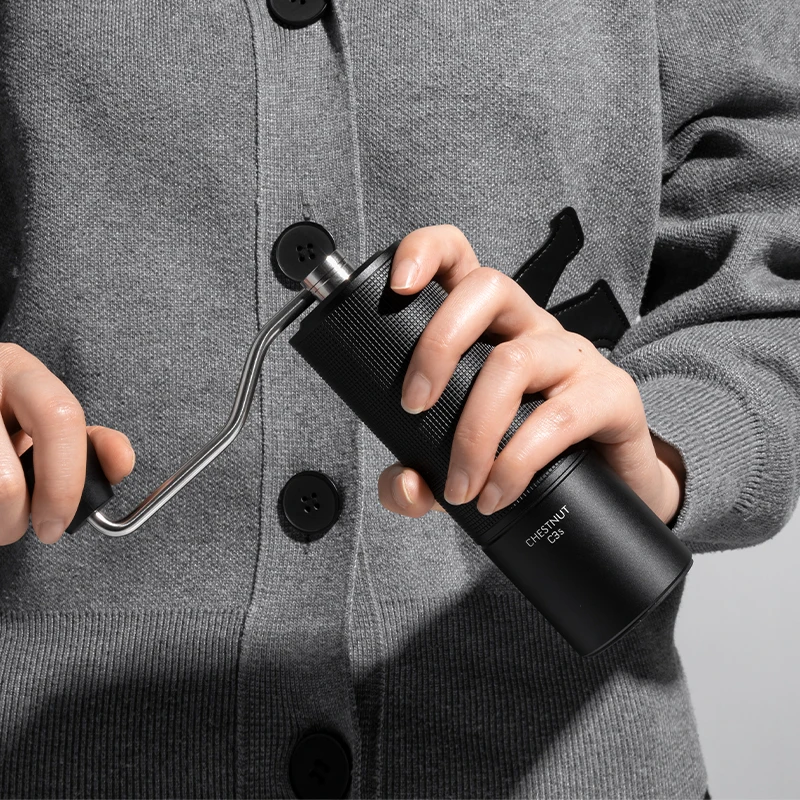
Ultimate Comparison Chart: Burr vs. Blade Side-by-Side
| Feature | Blade Grinders | Burr Grinders |
|---|---|---|
| Grind Consistency | Poor to Fair | Very Good to Excellent |
| Price Range | $15-50 | $40-300+ |
| Typical Lifespan | 1-3 years | 5-15+ years |
| Noise Level | 80-90 dB | 70-85 dB (electric), Silent (manual) |
| Counter Space | Small (4-5” footprint) | Medium-Large (5-8” footprint) |
| Cleaning Ease | Simple (1 chamber) | Moderate (multiple components) |
| Grind Size Control | Limited (timing only) | Precise (adjustable settings) |
| Heat Generation | High | Low to Moderate |
| Ideal User | Casual drinker, budget-focused | Coffee enthusiast, quality-focused |
| Best Brewing Methods | Drip coffee, cold brew | All methods, especially espresso and pour-over |
Hand burr grinders offer an excellent middle ground for those seeking quality grinding without a substantial investment, combining precision with affordability.
Making the Right Choice: Decision Factors for Home Users
What’s Your Budget Reality?
Budget often drives initial decisions, but consider long-term value. A $30 blade grinder might seem economical, but if it produces subpar coffee and needs replacement after 18 months, is it truly a bargain? Meanwhile, a $150 burr grinder that lasts 10+ years costs about 4 cents per day over its lifetime—often less than the flavor improvement it adds to each cup.
Consider starting with a quality manual burr grinder if budget is tight. This provides the consistency benefits of burrs without the higher cost of electric models, and you can upgrade to an electric version later while keeping the manual for travel.
How Important is Coffee Quality to You?
Be honest about your coffee priorities. If you primarily value convenience and add milk and sugar to your coffee, a blade grinder may suffice. However, if you enjoy exploring different single-origin beans and brewing methods, a burr grinder is practically essential for accessing the subtle flavor notes you’re paying for in specialty coffee.
Remember that grinding is one of the few brewing variables completely under your control, making it a high-impact investment for quality improvement.
Which Brewing Methods Do You Use Most?
Your preferred brewing method should heavily influence your grinder choice. If you make primarily French press or cold brew, a good blade grinder might serve you adequately. But if you enjoy pour-over or espresso, the precision of a burr grinder becomes nearly essential.
For espresso specifically, look for burr grinders with fine adjustment capabilities, as tiny changes in grind size dramatically affect extraction. For multiple brewing methods, prioritize grinders with easily repeatable settings.
How Much Coffee Do You Make Daily?
Volume matters when choosing between manual and electric options. If you typically make 1-2 cups per day, a manual grinder is perfectly practical. For family-sized batches or multiple brewing sessions daily, the convenience of an electric model becomes more valuable.
Also consider capacity—some compact grinders require multiple batches for larger brews, adding time to your morning routine.
Choosing between burr and blade grinders ultimately involves balancing these factors against your specific needs and preferences to find the right fit for your coffee routine.
Hand Burr Grinder, Hand Crank Coffee Grinder, Manual Espresso Grinder, Portable Coffee Grinder
Price range: $262.72 through $300.22 Select options This product has multiple variants. The options may be chosen on the product pageManual Burr Mill, Manual Coffee Grinder Stainless Steel, Manual Coffee Mill Grinder, Mechanical Coffee Grinder
Price range: $127.26 through $130.32 Select options This product has multiple variants. The options may be chosen on the product pageHand Burr Grinder, Manual Coffee Grinder Stainless Steel, Precision Manual Grinder
Price range: $183.64 through $187.52 Select options This product has multiple variants. The options may be chosen on the product pageCeramic Burr Coffee Grinder, Hand Burr Grinder, Hand Crank Coffee Grinder, Manual Coffee Bean Grinder
Price range: $59.17 through $59.96 Select options This product has multiple variants. The options may be chosen on the product page
Essential Maintenance Tips for Any Coffee Grinder
Regular cleaning prevents flavor contamination – Clean your grinder every 1-2 weeks if used daily. Old coffee oils become rancid and taint fresh grounds with stale, bitter flavors.
Keep beans separate from your grinder – Store coffee beans in an airtight container away from light and heat, grinding only what you need for immediate use to preserve freshness.
Avoid moisture at all costs – Never clean grinder burrs or blades with water unless manufacturer instructions specifically allow it. Instead, use a dry brush and grinder-specific cleaning tablets occasionally.
Combat static buildup – Add a few drops of water to beans before grinding (known as the “Ross Droplet Technique”) to reduce static cling, or simply tap the grinder gently and wait 30 seconds before opening after grinding.
Check burr alignment periodically – For burr grinders, ensure that burrs remain properly aligned for optimal grinding. Unusual sounds or sudden changes in grind consistency often indicate alignment issues.
Watch for replacement indicators – Burrs eventually wear down, typically after grinding 500-1000 pounds of coffee. Signs include more fines in your grind, less consistency, or difficulty achieving fine grinds.
Proper manual burr grinder maintenance extends equipment life and ensures consistent quality in your daily brewing, protecting your investment and your coffee flavor.
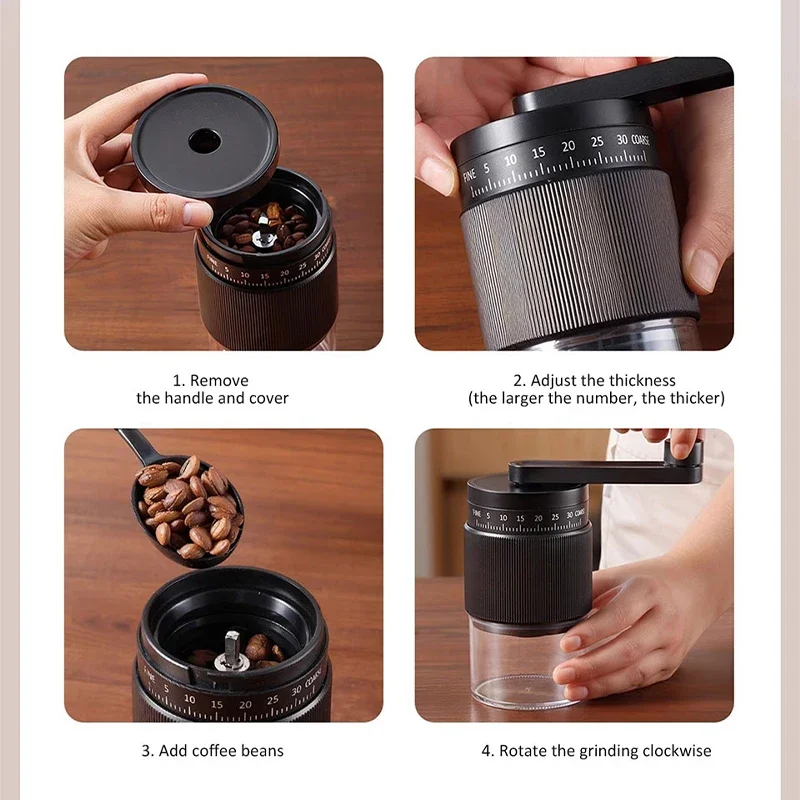
Conclusion: Investing Wisely in Your Coffee Journey
The choice between burr and blade grinders ultimately reflects your relationship with coffee. Blade grinders offer an accessible starting point for casual drinkers and those with tight budgets, providing a definite upgrade from pre-ground coffee despite their limitations.
Burr grinders represent an investment in consistency, control, and flavor clarity. The 20-30% improvement in extraction efficiency they provide translates directly to cup quality you can taste. For anyone who appreciates the nuances in different coffee origins and brewing methods, a burr grinder isn’t a luxury—it’s a fundamental tool.
As you evaluate your options, consider how your grinder fits into your overall coffee experience. The right grinding tool elevates every other aspect of brewing—from bean quality to water temperature to brewing technique. By matching your grinder to your specific brewing needs, budget, and quality expectations, you’ll set yourself up for more satisfying coffee experiences for years to come.
Explore our selection of ceramic burr coffee grinders for durable, heat-resistant grinding, or browse specialized manual coffee grinders for espresso if precision fine grinding is your priority.

